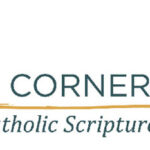By Corinne Winter
Over the past two Saturdays, we have been reminded of the dogma of the Assumption and of the title Queen of Heaven, attributed to Mary in the prayer tradition of the church. These celebrations may call to mind many lovely church windows and paintings exalting Mary for her unique holiness. Theological reflections show that the teachings have significance for the way we live.

In 1950, when Pope Pius XII defined the Assumption of Mary into heaven, he presented the dogma as a sign of hope for a church seeking to retain its place in a world marked by rapid technological changes, by the scars of war and by the growing threat of Communism. By God’s overwhelming generosity, Mary was united as a whole person (“body and soul”) with her Son and with the Father and the Holy Spirit.
This union was not only for her own sake but for the sake of the whole church. As Mary, with the other disciples, prayed for the presence of the Holy Spirit to animate the work of the first Christians, she now, together with Christ, continues to intercede for the church. Through her intercession, the church will continue to be filled with the grace to continue Christ’s mission on earth. Furthermore, Mary’s life in complete union with God testifies to the church’s eschatological destiny. Through the work of the church, God calls all people to full communion in the divine life.
In his Apostolic Constitution containing the dogmatic definition, the pope also spoke of Mary as Queen of Heaven, a title he had used for her in several earlier works. He drew on the works of fathers and doctors of the church as well as on popular prayer and on the theology expressed in numerous icons beginning as early as the fifth century. Mary is queen, he asserted, because of her unique role in the work of Christ the King. He went on to link her queenship specifically with her sharing as mother in the suffering of Christ, calling her Queen of Martyrs. As such, she shares in Christ’s compassion, intercedes for those suffering on earth, and stands as a model for those who suffer in faith.
During the decade after Pope Pius’ writings, the bishops at Vatican II took up the theme of Mary’s role in the life of the church. When we honor the saints, including Mary, they declared, we express the eschatological nature of the church, our orientation to the communion with God that is the final destiny of creation (LG 50–51). They described God’s gifts to Mary not as privileges that placed her above the rest of us but as signs of God’s promise to all, as Mary is in union with God and in solidarity with us (LG 53).
In 1987, Pope John Paul II further explored the meaning of Mary’s Assumption as a sign for the church in his encyclical Redemptoris Mater. In that document, he pointed to Mary as a sign of God’s love for the poor and marginalized. He referred to the Magnificat, the prayer from the Gospel of Luke that we hear at almost every liturgical celebration of Mary’s role. It has come to represent for us Mary’s response to God’s work in her life. That prayer refers to God’s lifting up the lowly, doing great things for the poor, raising the powerless. When we reflect on Mary’s calling and cooperation with the work of God, when we contemplate God’s great gifts to her, we ought to recognize our own calling to make a preferential option for the poor. As Mary remains in solidarity with us, we should be in solidarity with those whose need is greatest. They too are God’s chosen ones.
These magisterial reflections associated with the Feast of the Assumption and the memorial of Mary’s queenship offer messages that seem appropriate to the situation in which we find ourselves today. In this time marked by the pandemic, by natural disasters and by political unrest, we certainly find ourselves in need of the message of hope. The August issue of Give Us This Day included a short reflection by Alice Camile on the declaration of the dogma of the Assumption. Camille stated that after the horrors of World War II, the dogma provided a vital reminder of the value of human life and in particular of the human body. It is a message, she proposed, that we need again today. Camille had written her reflection even before recent events that show how racism, brutality and division remain prevalent in our society. Pope John Paul II’s call for the church to be in solidarity with the poor and marginalized speaks to the inequities that have been highlighted by the pandemic.
As we recall God’s work in the life of the Mother of Jesus, may we not limit our reflections to lovely pictures of Mary’s holiness. May we seek as well to appreciate and to respond to the work of the Spirit in our own lives. May we persevere despite suffering, trusting in God’s promises and may we not lose ourselves in our own needs but reach out to those whose needs are greatest.
(Corinne Winter is a professor-emerita of St. Ambrose University, Davenport.)











